Good ambient lighting
Ambient lighting is evenly distributed and illuminates entire rooms. It is usually produced by light that is directed upwards towards the ceiling, or by luminaires that emit light evenly to all sides. It provides the basic brightness which eyes need for orientation. It evens out sharp differences in brightness in rooms, helping your eyes adapt to different zones and putting less strain on them. If there is no ambient lighting, for example, in a living room with a single reading lamp above the sofa, your eyes are strained. Balanced ambient lighting, on the other hand, creates a comfortable atmosphere that enhances your sense of well-being.

Ambient lighting in living rooms
A centrally located ceiling light alone is unable to satisfy the requirements of variable living room lighting. However, we recommend that you install at least one luminaire which you can switch on for orientation purposes when entering the room, but we advise against classic opal luminaires with power ratings of more than 150 watts as they produce glare and negatively affect the atmosphere in the room. However, floor lamps, table lamps, wall lights and pendant lights are all suitable forms of lighting. We particularly recommend glare-free luminaires which illuminate the ceiling and create soft, uniform ambient lighting. Track systems which can be used to position numerous lights independently of the ceiling outlet present a flexible solution. This way, ambient lighting can be effectively combined with zone lighting.
Ambient lighting in living rooms

Ambient lighting in dining rooms
In dining rooms, ambient lighting can be created by means of wall lights, floor lamps or table lamps. It is recommended to install at least one luminaire which you can switch on for orientation purposes when entering the room. In this case we also advise against the use of classic opal luminaires with power ratings of more than 150 watts as they produce glare. Instead, we recommend glare-free wall lights, floor lamps and table lamps which illuminate the ceiling and create soft, uniform ambient lighting. Some pendant lights which supply zone lighting for dining tables also provide general ambient lighting, making them the ideal solution for dining rooms.
Ambient lighting in dining rooms
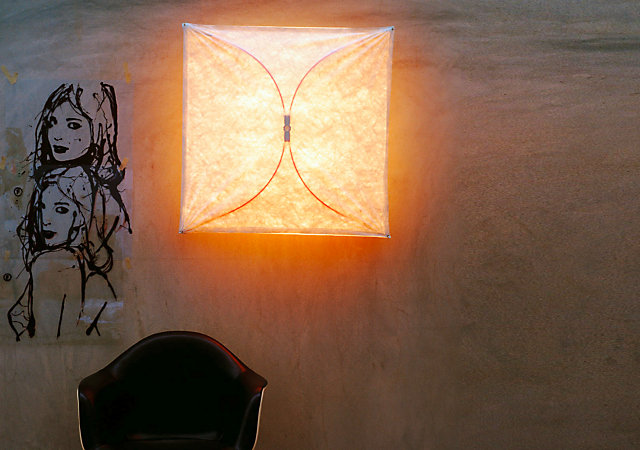
Ambient lighting in bedrooms
Here, it is recommended to install at least one light which you can switch on for orientation purposes when entering the room. Classic ceiling lights, for instance, made of opal glass should only be equipped with illuminants with a maximum power of 60 watts since a higher power rating would only lead to the production of glare. However, the ambient lighting created with 60 watts is insufficient to properly illuminate wardrobes – zone lighting is required. If you, however, do not want to separately illuminate your wardrobe, you should choose a luminaire that creates sufficiently bright light but which is still glare-free. Ceiling lights, pendant lights, wall lights and floor lamps with a power rating of 100 watts or higher which direct their light towards the ceiling are ideal for this task as they create soft, uniform ambient lighting.
Ambient lighting in bedrooms
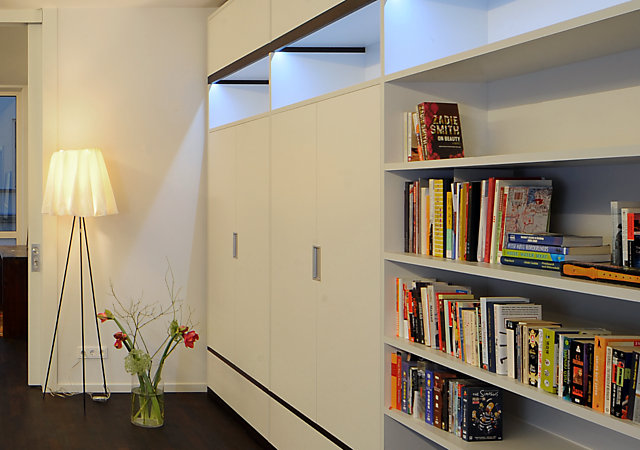
Ambient lighting in studies
It is difficult to create soft, glare-free ambient lighting in studies by means of a centrally located ceiling light. However, it is recommended to install at least one luminaire which you can switch on for orientation purposes when entering the room. Floor lamps, wall lights and pendant lights which direct their light towards the ceiling are the ideal solution for this purpose since they create indirect, uniform ambient lighting. Illuminating the ceiling is also beneficial because this makes the walls in the room appear higher which makes the room look larger in general. Powerful illuminants which ensure the required ambient lighting are ideally suited for indirectly illuminating studies. Particularly good choices include fluorescent lamps, compact fluorescent lamps and bar-shaped halogen lamps with power ratings of at least 150 watts.
Ambient lighting in studies
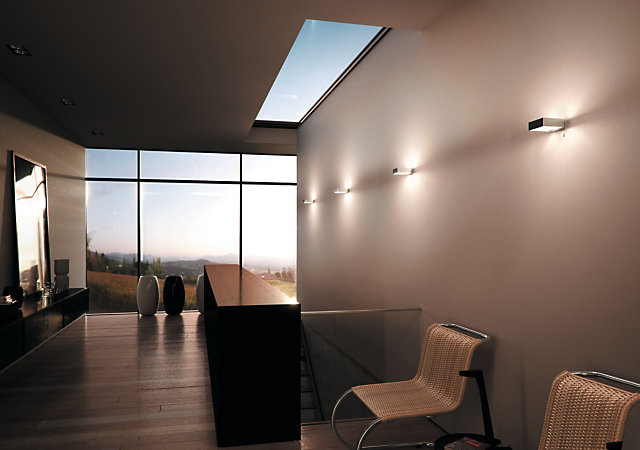
Ambient lighting in hallways
Hallways seem larger and more welcoming when the ambient lighting is directed at the walls and the ceiling. Wall lights are therefore ideally suited for this job. When using ceiling lights and pendant lights, always makes sure that these emit as much light as possible onto the walls and the ceiling. Track systems which can be used to position numerous lights independently of the ceiling outlet are a practical solution for hallways. Respective systems ensure an effective combination of ambient lighting and zone lighting.
Ambient lighting in hallways

Ambient lighting in bathrooms
As a pleasant contrast to the soft, low shadow zone lighting on the mirror, it is recommended to provide for direct ambient lighting in the bathroom. Usually, ambient lighting is diffuse and zone lighting is direct. When used to illuminate mirrors, however, this should be just the reverse. In this case, ceiling lights made of opal glass can be used to create ambient lighting in bathrooms as these rooms are usually so small that the luminaires are not within your field of vision and you are therefore not blinded. An essential requirement placed on suitable bathroom lighting is safety. It is guaranteed that lights designed in accordance with the European standard EN 60598 are protected against splashing water from all directions.
Ambient lighting in bathrooms
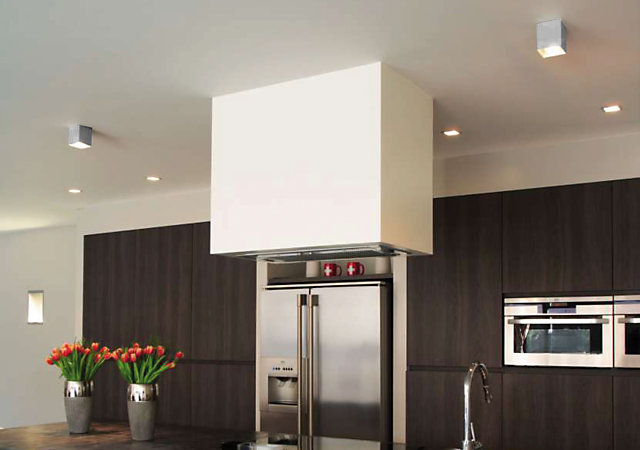
Ambient lighting in kitchens
For kitchens, we recommend using zone lighting rather than ambient lighting. If a luminaire is positioned centrally within the room they can create annoying shadows on the work surfaces. If you want to create ambient lighting, you can use ceiling lights and pendant lights which emit soft, scattered light. In any case, a dimmer is recommended. A part of the zone lighting should be installed in a way which allows you to switch on a light for orientation purposes when you enter the room.
Ambient lighting in kitchens
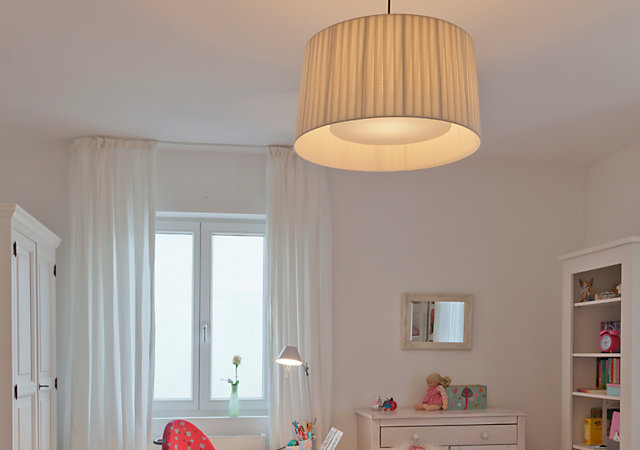
Ambient lighting in children´s room
Here, it is also recommended to install a centrally positioned ceiling light that can be switched on for orientation purposes when entering the room. Alternatively, wall lights can be used to create an effective ambient lighting. In rooms of small children, it is advised against the use of table lamps and floor lamps since children are often playing and romping which increases the risk of such lights being destroyed. Furthermore, some illuminants cause a certain heat development – this means that there is a risk of burning. The light selected should provide a certain brightness to make sure that the little ones have a perfect view while playing. At the same time, the children's room lighting must not produce too much glare.
Ambient lighting in children´s room







